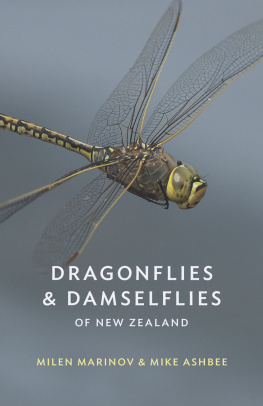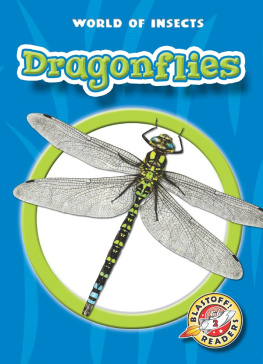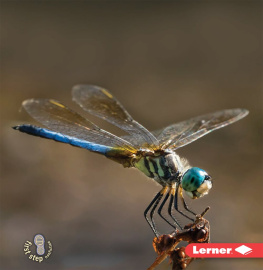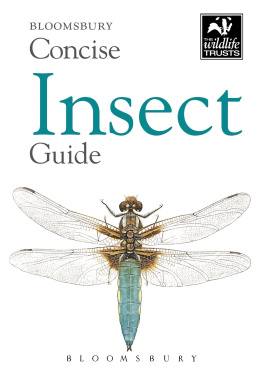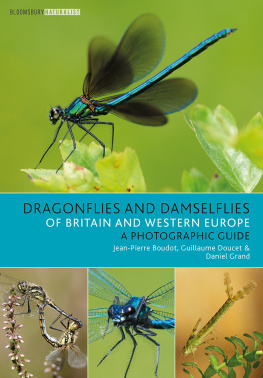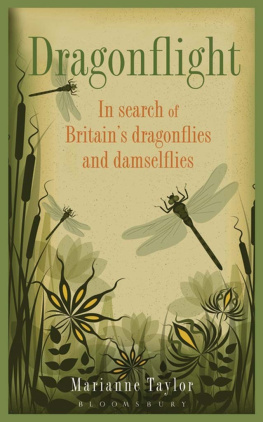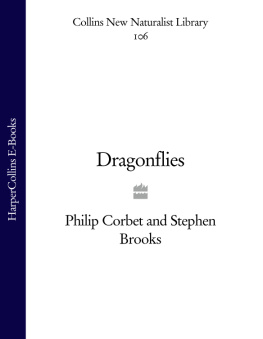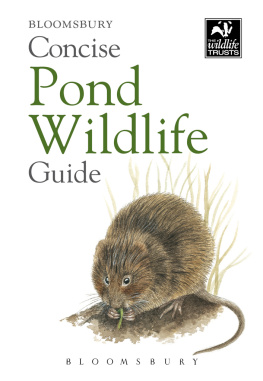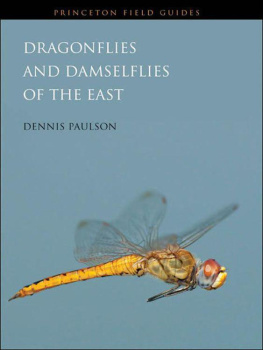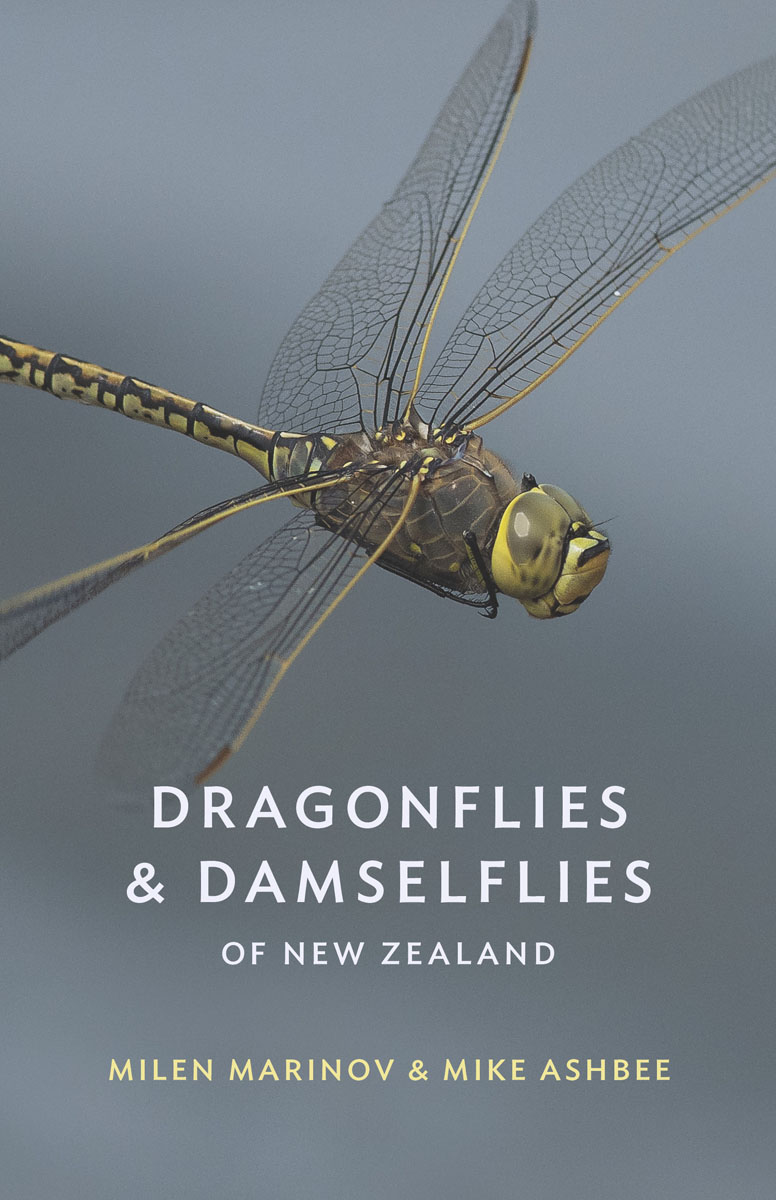
Milen Marinov is an entomologist at the Ministry for Primary Industries and author of numerous articles in key entomological and museum journals as well as co-author of An Illustrated Guide to Dragonflies of Viti Levu, Fiji (University of the South Pacific Press, 2013). Mike Ashbee is an acclaimed natural history photographer. Both authors are based in Christchurch, New Zealand.

A teneral sentry dragonfly clings to its exuvia while hardening through the night.
Contents

A male yellow spotted dragonfly illustrating the association of this group of insects with flying dragons.
Preface
Dragonflies if a name should reflect character, then dragonflies could not have been better named. Dragons in legends, mythologies and fairy tales are often pictured as strong, fearsome, merciless rulers of the air, but are sometimes portrayed as full of wisdom. Dragonflies have it all: they are strong, dynamic fliers showing no mercy towards mosquitoes or many other small insects. What about wisdom? Well, one could argue that by surviving the many major extinction events since the first dragonfly-like ancestor appeared on our planet more than 325 million years ago this group of insects has indeed earned the label wise. Regardless, todays dragonflies are superbly adapted to their environment.
Damselflies, on the other hand, look completely opposite to their relatives delicate wings; slim, elongate abdomens; large, wide-set eyes that track the minutiae of the world around them; subtle nuances of colours on their bodies in a combination that is very often pleasing, even entrancing, to a human observer. No wonder that their common name associates them with a young girl.
However, both dragonflies and damselflies have similar life histories and the same general organisation of their bodies. Therefore, they are combined in one insect group the order Odonata. Since there is not a general common name for the whole group, people often refer to them all as odonates. Likewise, for convenience, that approach is used in this book dedicated to New Zealand species of Odonata.
The New Zealand damselfly and dragonfly fauna comprises 14 species currently known to breed in the North and South Islands, Stewart Island/Rakiura and the Chatham Islands. Additional species have been recorded on the Kermadec Islands and others still have arrived occasionally on New Zealands main islands but have failed to establish permanent populations. Some tropical Pacific odonates are gradually expanding their ranges with increasing global temperatures and may find their way to New Zealand in the near future. This book includes all those species, but local New Zealand residents are our main focus because most of them are endemic, meaning that they are found only on these four main islands and nowhere else in the world. We pay special attention to what we need to know and do in order to protect them from introduced pest animals and plants, which may deplete or smother dragonfly natural habitats and replace our unique treasures forever.
New Zealands eight endemic species sit in five genera (spread over four families), three of which Xanthocnemis, Uropetala and Antipodochlora are entirely endemic (the other two genera have species found outside of New Zealand). The evidence suggests that some of our endemics developed from ancestors that were isolated from the rest of the world more than 80 million years ago, after the break-up of the supercontinent Gondwana. Subsequent generations persisted, surviving through New Zealands geomorphological history, which included subsidence of the land, earthquakes and volcanic activities, the formation of mountains and glaciation. So, todays odonates are messengers, time capsules containing encoded genetic information from ancient times when their ancestors were flying together with the predecessors of species that we now find on distant continents such as Australia and South America.
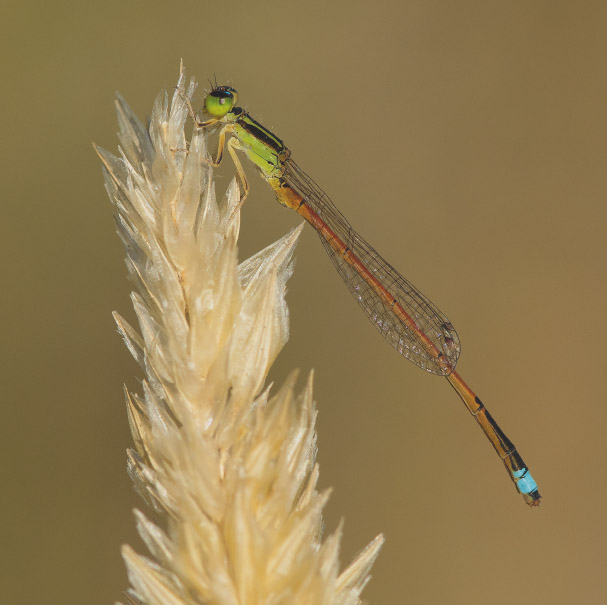
Male gossamer damselflies are dainty and extremely pretty insects.
Odonates may not possess human intelligence but they can certainly help us to exercise our brains more effectively. Observe and remember what you see, and refer to this guide. You can go one or more steps further by taking notes in the field and/or recording encounters with a camera or sketchbook. There is no better way to connect with nature. The more you watch odonates, the more you will be enchanted. The more carefully you observe them, the richer will be your experience.
In fact, damselflies and dragonflies are easy to observe. The life of adult odonates is enacted in or around the open wetlands, rivers or temporary puddles in which they breed. Almost all you have ever read in nature books or watched in natural history documentaries about the lives of mammals or birds such as establishing and defending territories, finding mates and food, or the general struggle for existence is easily observable from the bank of an overgrown pond. Just book your seat by bringing a chair and watch the odonates dance over the water.
Wetland, river, puddle, pond the link between odonates and freshwater is more than just opportunistic. These insects depend on freshwater, and many species are quite sensitive to its quality, so the cleaner the waterway, the more diverse and abundant is its odonate fauna. Record the presence of adults of each species throughout the year, noting this on a calendar. Keep doing this year after year. Do not stop. You will come to expect each species to appear at a particular time of the year and to fly for a specific period. When there are changes in your local water habitats, damselflies and dragonflies will be among the first to tell you youll notice fewer species, lower numbers than usual or even different species. These alarm bells can prompt you to check with your neighbours to find out what may have happened and how it can be fixed.
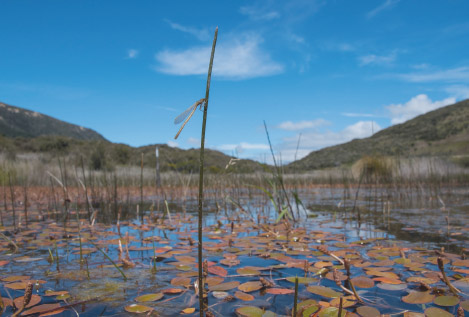
Damselflies and dragonflies are easy to observe from the bank of a pond.

A female redcoat damselfly greets us at a ponds edge in Christchurch, New Zealand. Odonates are excellent indicators of water quality and they can teach us how to manage our freshwater resources.
This book aims to be a broad guide to New Zealand Odonata. Use it: as an identification manual; as a source of information on damselfly and dragonfly biology; for instructions on how to take close-up photos of insects in nature; for directions on where to observe odonates; for ideas for future studies; for guidelines on conservation activities; and as an album of nature photos. For quick reference in the field, you can use the separate identification chart in this book. We like to think that we are giving you a guide to last your lifetime. At least, thats how we feel about these insects, which have guided our lives for more than 30 years. For us, odonates have been a never-ending source of joy, wonder and intellectual stimulus. We hope we have managed to convey the pleasure that we have experienced during years of study and that you, the reader, will enjoy your time with New Zealand damselflies and dragonflies as much as we have!
Next page
